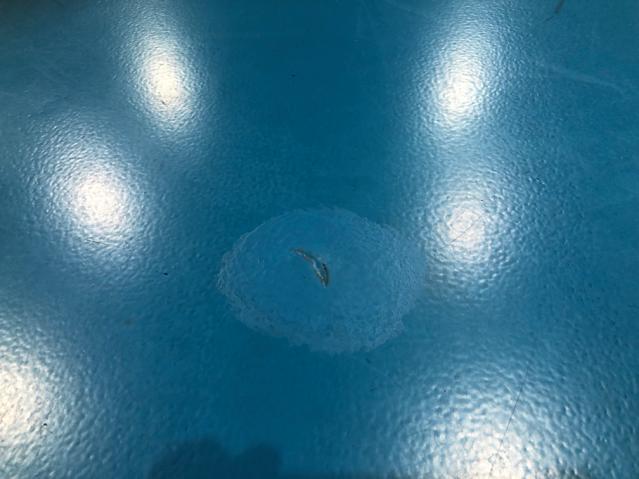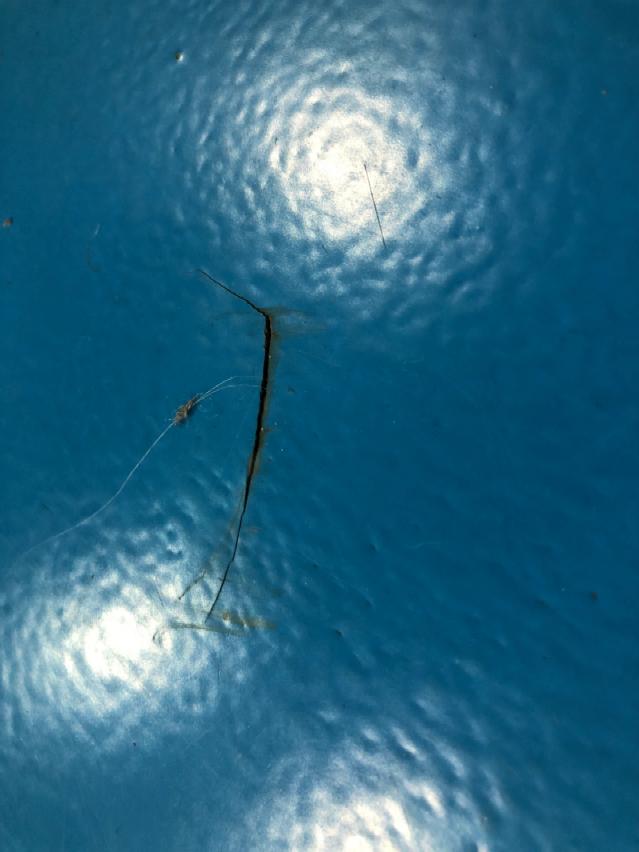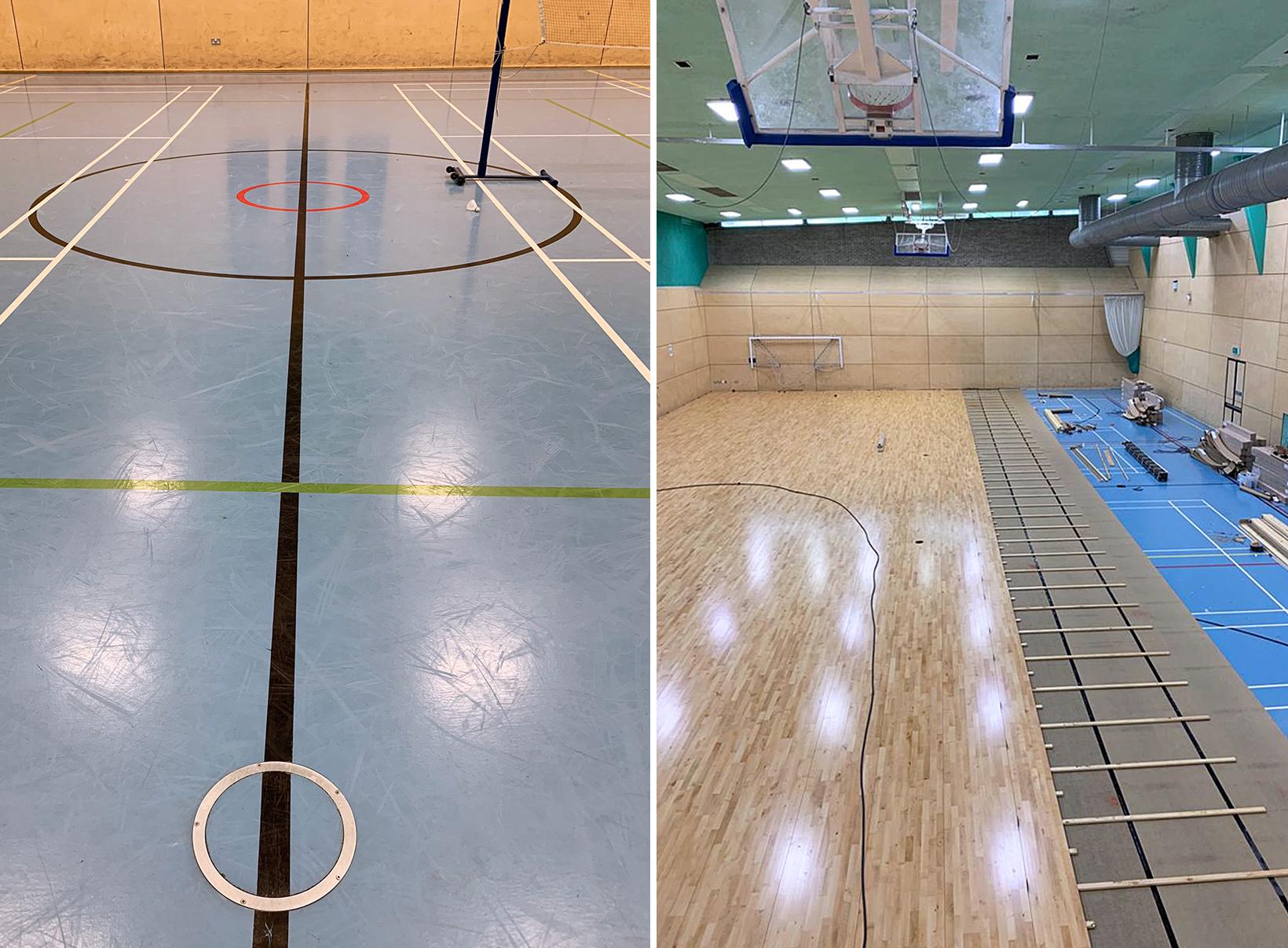Replacement of old sports and activity floors
DO YOU ALWAYS NEED TO STRIP UP THE OLD FLOOR FINISH?
In schools, universities and sports centres there are still many older floors at or near the end of their lives, which may be made from a diverse range of materials When they were originally installed clients, designers and manufacturers were not so aware of the comfort and health benefits of having a shock absorbing sprung floor, or the environmental benefits of solid hardwood.
You can find older activity floors made from composite blocks (eg Granwood in the UK) asphalt, linoleum, vinyl or polyurethane resin. Composite floors may crack and blocks come loose. Sheet floor coverings such as polyurethane, linoleum and vinyl may have failed and lifting seams, cuts, scratches and scuffs, and old repairs will often be very visible. Many of these floors will not comply with current standards, will be uncomfortable to play on and are more likely to result in injuries compared with modern systems


You can of course strip up and dispose of these finishes, repair the base and install a new floor. But sometimes it can make sense to leave the old finish in place and overlay it.
This can prove beneficial in terms of time and cost and might defer the burden on the environment by delaying disposal until synthetic floor manufacturers and the waste processing industry can offer acceptable methods of reprocessing or recycling. At the present time disposal of materials such as vinyl (PVC) and PU is difficult, costly, potentially hazardous, and places unwanted burden on landfill.
Photo: CourtCraft Ltd.

So why not just overlay the old floor with a new Junckers Clip system or battened sports floor?
The old floor can provide a good base for the new one provided it is sound, dry and flat (or capable of being made flat). Some older floors may need a moisture barrier on top, and our technical department will be pleased to advise further in these cases.
An old “non-sprung” floor can be transformed into a fully certified EN 14904 category A3 or A4 solid hardwood activity floor with a 60 year life span. In the UK this standard is recommended by Sport England, Sport Scotland, many sports governing bodies and the ESFA when designing activity spaces in schools. If you choose the right system eg. a Junckers Clip System (A3) or UnoBat 45 (A4) floor, it is usually easy to accommodate the small increase in floor height.
If the old floor has a soft finish is it likely to affect the performance of the new floor?
If you have an old point elastic floor such a foam backed vinyl or polyurethane, you may ask if the resilience of the surface may affect the performance of a new certified area elastic category A3 or A4 floor. In fact this is unlikely to be a problem, as was demonstrated by Junckers and Approved Contractor Courtcraft Ltd at Liverpool University.
Photo: CourtCraft Ltd.

Here the client struggled to maintain the slip resistance of their polyurethane floor, which was about 7 years old.
The PU was left in place and a Junckers SylvaSport Beech/ UnoBat 45 batten floor system was laid on top. To satisfy the University that the new floor with the old finish still in place complies with the European Standard for multi purpose indoor sports floors, it was tested on site by CST Global, who certified the floor to EN 14904, category A4.
For more information, contact Junckers Technical Department.
